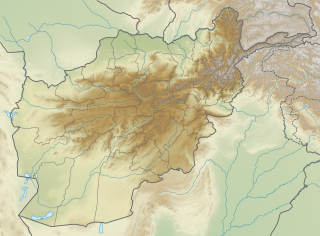 W
WThe 1998 Aiquile earthquake occurred on May 22 at 00:48:53 local time in Bolivia. This strike-slip earthquake had a moment magnitude of 6.6 and a maximum Mercalli intensity of VIII (Severe). Damage was severe, with at least 95 deaths, 50–150 injuries, and 6,900 homeless.
 W
WThe 1998 Adana–Ceyhan earthquake occurred at 16:55 local time on 27 June with a moment magnitude of 6.3 and a maximum intensity of IX (Destructive) on the European macroseismic scale. The total economic loss was estimated at about US$1 billion.
 W
WThe February 1998 Afghanistan earthquake occurred at 19:03 local time near the Afghanistan-Tajikistan border. The strike-slip shock had a moment magnitude of 5.9 and a maximum Mercalli intensity of VII. With several thousand dead and hundreds injured, the event's effects were considered extreme. It was felt at Tashkent and Dushanbe, and aftershocks continued for the next seven days.
 W
WAn earthquake occurred in northern Afghanistan on 30 May 1998, at 06:22 UTC in the Takhar Province with a moment magnitude of 6.5 and a maximum Mercalli intensity of VII. At the time, the Afghan Civil War was underway; the affected area was controlled by the United Islamic Front for the Salvation of Afghanistan.
 W
WThe 1998 Bahía de Caráquez earthquake occurred on August 4 at 13:59 local time with a magnitude Mw 7.2. The epicenter was located at 10 km north of Bahía de Caráquez, about 190 km NNW of Guayaquil, and about 215 km W of Quito, Ecuador. The intensity in Bahía de Caráquez reached MM VIII. In Bahía de Caráquez, electricity, telephone, and water services disrupted, and many buildings were damaged. It was felt strongly in Guayaquil and Quito and could be felt in much of Ecuador and in Cali, Colombia. An Mw 5.4 foreshock occurred 1 hour and 24 minutes before the main shock and hence alerted many people. The Nazca Plate is subducting beneath the South American Plate near the Ecuadorian coast. This earthquake was a shallow thrust earthquake in this subduction zone.
 W
W1998 Mionica earthquake was a 5.5 magnitude earthquake in western Central Serbia, near the town of Mionica. The epicentral area was in the region of Brežđe village, where it had a maximum intensity of VIII on the Mercalli intensity scale. It was felt in Central Serbia, Vidin (Bulgaria), Sarajevo (Bosnia) and parts of Croatia, Hungary and Greece. One person died from a heart attack and 17 were injured. Some 60 schools were damaged.
 W
WThe 1998 Ninglang earthquake (1998年宁蒗地震) occurred on November 19 at 19:38 local time. The epicenter was near the border between the provinces of Sichuan and Yunnan, China. The United States Geological Survey stated that the epicenter was located in the Sichuan Province, while the China Earthquake Data Center provided a different location in Lanniqing Township (烂泥箐乡), Ninglang, Yunnan Province. The magnitude of the earthquake was put at Ms 6.2 and it caused five deaths, with 208 seriously injured in Yunnan and 20 people seriously injured in Sichuan. Building damage was reported in Ninglang, Yunnan and Yanyuan, Sichuan. A dammed lake was formed by a landslide in the Lanniqing Township.
 W
WThe 1998 Papua New Guinea earthquake occurred on July 17 with a moment magnitude of 7.0 and a maximum Mercalli intensity of VIII (Severe). The event occurred on a reverse fault near the north coast region of Papua New Guinea, 25 kilometers (16 mi) from the coast near Aitape, and caused a large undersea landslide which caused a tsunami that hit the coast, killing between at least 2,183 and 2,700 people and injuring thousands.
 W
WThe 1998 Pymatuning earthquake occurred in the U.S. state of Pennsylvania on September 25 at 19:52 UTC. With a magnitude of 5.2 mbLg, it was the largest recorded earthquake in Pennsylvania's history.